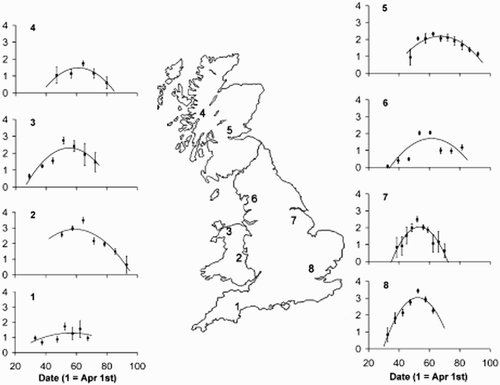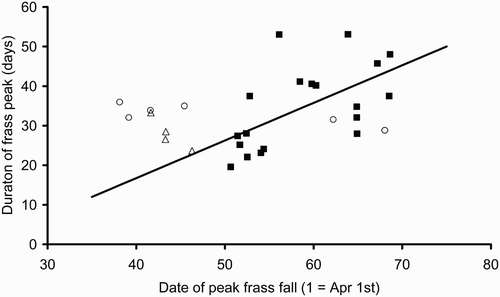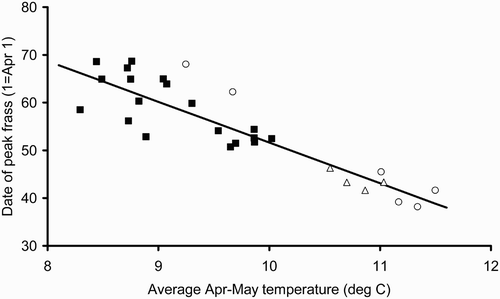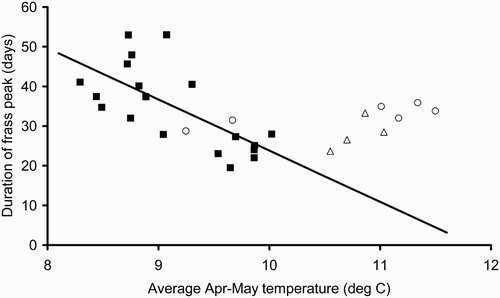Figures & data
Figure 1. The localities included in this study and the overall mean temporal pattern of frass fall for each locality. For each locality the log10 (mean frass fall (mg/m2) + 1) in each time period was used to calculate and an overall quadratic regression; error bars represent ± 2 se. The traps were distributed as follows: (1) Devon, 1 wood, 4 traps, 2010; (2) mid-Wales, 4 woods, 11 traps, 2009 and 2010; (3) north Wales, 2 woods, 4 traps, 2010; (4) Lochaber, 1 wood, 4 traps, 2010; (5) Stirling, 1 wood, 4 traps, 2010; (6) north Lancashire, 3 woods, 12 traps, 2010; (7) Nottinghamshire, 2 woods, 8 traps, 2010; (8) Hertfordshire, 5 woods, 19 traps, 2008–10.

Figure 2. Duration of the frass peak versus the date of the peak in 2010 (▪), 2009 (○) and 2008 (▵). The regression equation is derived from 2010 data only (duration = –21.3 + 0.951 * peak day; F 1,17 = 8.71, P = 0.009, R 2 = 33.9%).


